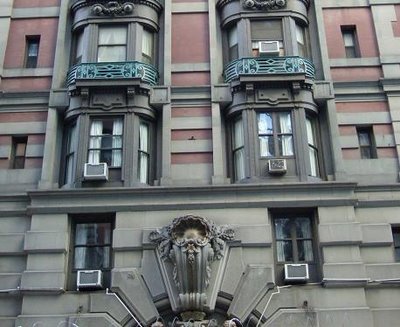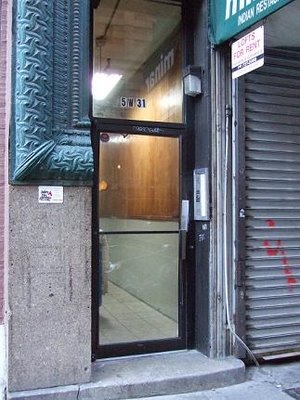Henry Miller's Red Phoenix

 Henry Miller caught wind of the project while it was still in the development stage. In the midst of his own Lawrence project (The World of D.H. Lawrence), Miller had found a means to be published in his home country—which he’d barely cracked—by offering an excerpt of his unpublished Lawrence work to appear in its debut issue early in 1938. Miller and Cooney soon found themselves in a mail correspondence and collaboration, in which Miller (based in Paris) acted as the magazine’s European Editor, as well as being the connection between The Phoenix and writers such as Anais Nin and Michael Fraenkel, whose appearances would help lend significance to the struggling arts journal. After four issues, a feud between Miller and Fraenkel—as well as the on-coming war—pushed Miller out of the project, leaving Cooney with his shattering dream.
Henry Miller caught wind of the project while it was still in the development stage. In the midst of his own Lawrence project (The World of D.H. Lawrence), Miller had found a means to be published in his home country—which he’d barely cracked—by offering an excerpt of his unpublished Lawrence work to appear in its debut issue early in 1938. Miller and Cooney soon found themselves in a mail correspondence and collaboration, in which Miller (based in Paris) acted as the magazine’s European Editor, as well as being the connection between The Phoenix and writers such as Anais Nin and Michael Fraenkel, whose appearances would help lend significance to the struggling arts journal. After four issues, a feud between Miller and Fraenkel—as well as the on-coming war—pushed Miller out of the project, leaving Cooney with his shattering dream.Karl Orend’s book, Henry Miller’s Red Phoenix: A Lawrentian Quest (Alyscamps Press, 2006) tells the story of The Phoenix magazine project. At the same time that that tale revolves around the earnest and tragic James Cooney
 and his suffering young wife, Blanche, it does so within a Henry Miller-shaped frame. Orend has a way of weaving his various narrative threads into a tight cord; even when the narrative is deep into description about James Cooney, Blanche Cooney, the Woodstock artist colony of the 1930s, Anais Nin, and Michael Fraenkel, Henry Miller is always present in some way (as is the subject of D.H. Lawrence, who inspired not only Cooney, but Miller and the entire Villa Seurat circle as well.)
and his suffering young wife, Blanche, it does so within a Henry Miller-shaped frame. Orend has a way of weaving his various narrative threads into a tight cord; even when the narrative is deep into description about James Cooney, Blanche Cooney, the Woodstock artist colony of the 1930s, Anais Nin, and Michael Fraenkel, Henry Miller is always present in some way (as is the subject of D.H. Lawrence, who inspired not only Cooney, but Miller and the entire Villa Seurat circle as well.)  Published biographies often, by their nature, streamline a life for practical purposes. If you’ve read all of the Miller biographies, then you’ll find this refreshing because it allows us to view the Miller you know from another perspective. The 100+ pages allow us time to observe a single chapter in his life as it ebbs and flows, allowing time meet the other players involved, often as asides, as if Miller has left the room yet we are still there to listen in on the gossip; we see, for example, the relationship develop between Cooney and Michael Fraenkel, to the extent where Fraenkel joins Cooney in Woodstock, New York, to work on the small press and attempt to create an artists’ utopia.
Published biographies often, by their nature, streamline a life for practical purposes. If you’ve read all of the Miller biographies, then you’ll find this refreshing because it allows us to view the Miller you know from another perspective. The 100+ pages allow us time to observe a single chapter in his life as it ebbs and flows, allowing time meet the other players involved, often as asides, as if Miller has left the room yet we are still there to listen in on the gossip; we see, for example, the relationship develop between Cooney and Michael Fraenkel, to the extent where Fraenkel joins Cooney in Woodstock, New York, to work on the small press and attempt to create an artists’ utopia.  Orend, who has been researching and writing on Miller for years (see Nexus: The International Henry Miller Journal, for starters; there’s also a wealth of independently-published works), knows this material inside-out, and shares it with extensive notations. The book also presents significant biographical information about Eduardo Sanchez, cousin to Anais Nin.
Orend, who has been researching and writing on Miller for years (see Nexus: The International Henry Miller Journal, for starters; there’s also a wealth of independently-published works), knows this material inside-out, and shares it with extensive notations. The book also presents significant biographical information about Eduardo Sanchez, cousin to Anais Nin.The second half of Henry Miller’s Red Phoenix, titled “Henry Miller’s Journey into The World Of Lawrence,” details Miller’s relationship with Lawrence’s work, including the trials of writing World. In the Appendix, Orend has included Conrad Moricand’s horoscope analysis of Henry Miller (which also appears in the latest Nexus journal).
Alyscamps Press doesn’t appear to have a central presence on the internet, but it you’re interested in the book, I can probably put you in touch with the author if you send me an e-mail.
[1] New York Times announcement, June 13, 1937; as cited by Orend.











 The tailor shop was located at 5 W 31st Street, off of 5th Avenue (I have no thorough history of the shop with me today, just these snaps and a few notes). I'm not sure what floor it was located on, though, by sight, it seems to me like the space behind these large windows was more suited to an open work space like a tailor shop, and the units above them are suited more to offices. Not sure when the Heimer-Brier handbag company goldleafed it's name onto the window-front.
The tailor shop was located at 5 W 31st Street, off of 5th Avenue (I have no thorough history of the shop with me today, just these snaps and a few notes). I'm not sure what floor it was located on, though, by sight, it seems to me like the space behind these large windows was more suited to an open work space like a tailor shop, and the units above them are suited more to offices. Not sure when the Heimer-Brier handbag company goldleafed it's name onto the window-front.
 I have previously written about the
I have previously written about the 

